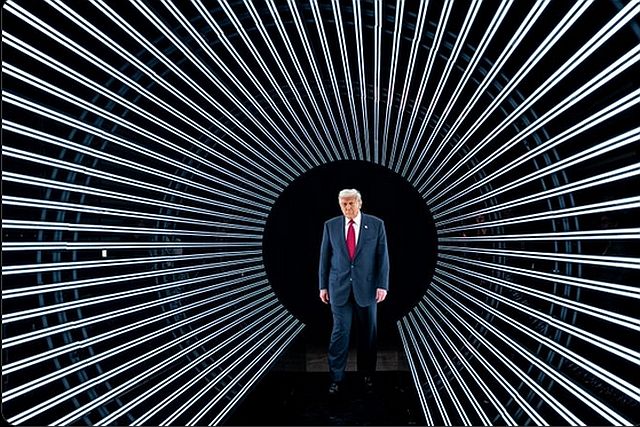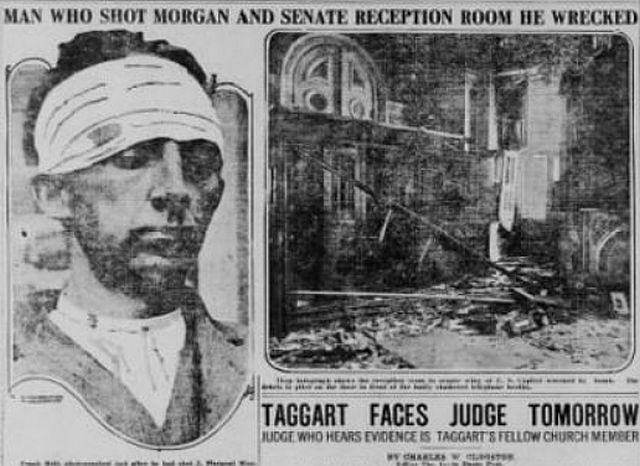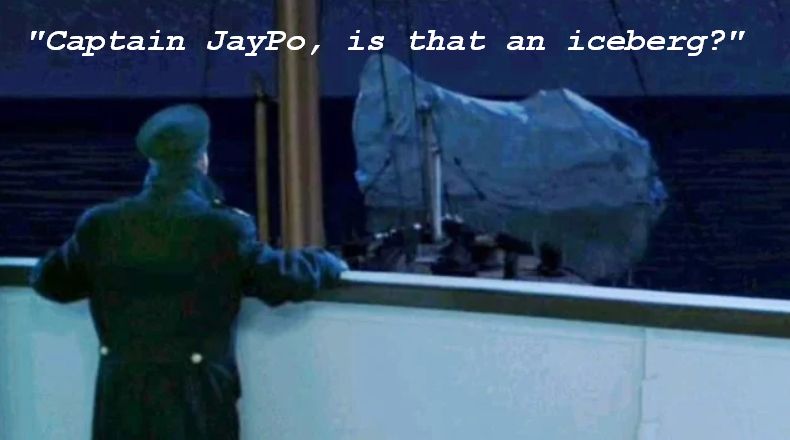If one is following these pages for gambling predictions, political predictions (yeah I picked Cuomo while intoxicated last December to win), or even sport wagering odds, please discount everything you are about to read.
However if you would like some in depth analysis of why the government shutdown must end by a specific time period for economic and political reasons, I think from a political-economy projection basis my readers might understand what I am about to project and why.
The Polymarket projections for this government shutdown are firmly into a territory which should terrify equity markets and retailers alike:

Alas, the wagering happy public however is not the last word. Let us take a trip down memory lane, recent and the distant past back to Trump v1.0 to review why this shutdown may last a bit longer than the American public might possibly conceive.
I. Ego
If anyone thinks the election results last night have had left any type of impression on the White House or the GOP leadership, I present to my readers this posting from the White House account on X:

This is not the sign of someone who believes that he’s lost any power nor that the economic circumstances in New York City are going to sway anyone from recognizing his omnipotent presence. What makes this worse is not the when it was posted but the idea that Trump has to remind New Yorker’s that he’s the man and that’s that on the night that they elected a socialist.
Instead of saying it was an isolated situation in a heavily Democrat city and ignoring it, once again the White House had to make it all about President Trump. This does not bode well moving forward as he has been demanding that it’s his way or the highway. To that end, what am I referencing?
Via Politico (subscription required to read entire article):
GOP senators hold firm on filibuster after Trump’s hard sell
This morning during a breakfast meeting with GOP Senators, the President pressed hard to enact the “nuclear option” in the Senate by demanding the end of the filibuster as part of the Senate rules. If one listens to the various business and political talk radio and television programs it was obvious that after last night’s elections, he got some serious push back from the old guard in the Senate.
Thus with the GOP infighting intensifying between the new MAGA wing of the party, the President, and the old guard, look for paralysis in the weeks ahead on a political solution while Democrats relish watching the Republican Party elites fight among themselves.
II. The Stock Market FAFO
For those “new new” investors to equities, credit, and commodities the idea that the US Government would “f” around and find out seems impossible. But in late 2018 during Trump’s first term, the United States came perilously close to major financial crisis that would have hit the first week of January 2019.
The equity market did not lie and it told a tale of woe that should terrify any sane investor and ask “how could this happen” while the gaslighting business media and political elites gloss over this as “just a gully.”
What happened in December of 2018 is a great reflection of what could happen now if the shutdown situation is left unresolved along with several other issues. To what am I referring to from that era?
I present my readers with a blip from the December 27, 2018 Market$ense section from PBS from which this excerpt might almost sound like a current day repeat to some degree:
But this year a number of other factors outweighed those positive economic indicators. President Donald Trump’s trade war with China, the slowdown in global economic growth and concern that the Federal Reserve was raising interest rates too quickly all contributed to a pessimistic reaction from the stock market. The federal government shutdown that began early Saturday has only added to the anxiety.
Emphasis added by yours truly. But what else created the unease? More from the same article:
Five major tech companies — Facebook, Apple, Amazon, Netflix and Google — make up 11 percent of the S&P 500 index.
When those companies are doing well, they can lift the S&P 500 as a whole, but when they perform poorly, they can drag the index down as well.
Thankfully we have seven this time.
But what happened to scare the living crap out of investors and the world in December of 2018?
Was it really that terrifying though?
According to the NY Times on December 10, 2018, yes:
Are You Ready for the Financial Crisis of 2019?
Excerpt:
For moneyed Americans, most of the past year has felt like 1929 all over again — the fun, bathtub-gin-quaffing, rich-white-people-doing-the-Charleston early part of 1929, not the grim couple of months after the stock market crashed.
Sound familiar?
Of course it does. But what happened in 2018 was extraordinary and the consequences of which impacted individual and corporate investing to this very day.
III. Merry Federal Reserve Christmas
On December 24, 2018, President Trump sent the following “Tweet” out attacking the Fed, let me know if this sounds familiar:

Remember the first part of this, his ego, and why he will never accept responsibility for poor decisions be they political or economic. While many speculate from certain circles that this Tweet is what caused what happened next, the reality was that there was a major liquidity crisis occurring in the US financial system and it was starting to impact the stability of the banking system.
So much so after a dramatic decline in equity markets during the shortened Christmas Eve holiday session, the Federal Reserve “leaked” a move which shocked the world. A non-leak-leak was issued to the financial media that the Fed would be omnipresent and provide liquidity support to markets as their recent FOMC actions should not impact financial markets after minor rate increase adjustments.
The perceived reality is that this was a non-QE Quantitative Easing and the markets took that to heart skyrocketing 5% on December 26, 2018. The truth is that there were were banks running into problems rolling over short and intermediate term debt and liquidity was becoming an issue for the system.
The Federal Reserve glossed over this in the opening assessment in the Tealbook release from January 18, 2019 p. 1 opening statement:
A key question for our projection is how to interpret the financial market
movements over the past several months. Among possible interpretations, one is that
financial market participants are more attuned to an underlying weakness in the economy
than we are, that the nonfinancial indicators we monitor are just lagging behind, and that
the prospective slowing in economic activity will be sharper than we are projecting. A
second possibility is that financial market participants are only now coming to grips with
the idea that waning fiscal and monetary policy stimulus will cause economic activity to
decelerate. This second interpretation suggests that a soft landing can be a little bumpy if
not everyone has anticipated it, but it would not suggest a need for a major recalibration
of the forecast. We are currently placing more weight on the second interpretation, and
our baseline projection reflects that judgment. This assessment is in line with the
predictions of near-term GDP growth from statistical models that take into account the
conflicting signals from a broad set of financial and nonfinancial variables (see the box
“Recent Financial Market Movements and GDP Nowcasting”)
Emphasis once again my own, but one has to scan through the reports to page 51 to find the money line:
Investors’ risk sentiment deteriorated over the early part of the intermeeting
period, spurring increased volatility and declines in the prices for risky assets. Later in
the period, however, sentiment turned, and risky asset prices rallied. On net, equity
prices ended the period notably higher, supported in part by communications of FOMC
participants later in the period that were interpreted as signaling greater flexibility in the
conduct of monetary policy in response to adverse macroeconomic or financial market
developments.
Emphasis this author’s once again.
Communications you say?
There was no statement, only a leak to the banks and financial media on December 24, 2018 after the market crash and close that day which triggered a 5% rally on December 26, 2018, after the markets being shut down for Christmas Day. This disturbing misstatement of facts is why one invests on the edges, heavily hedged, before a boomerang is created by the Fed and the dangerous idea that all investors are bailed out to ‘save the economy’ is not too outrageous of a theory, despite the inherent risks that lie within this investing strategy.
IV. The Deadline of 2025
Unfortunately for the Federal Reserve, much like 2018, the next FOMC meeting will occur in an environment of a government shutdown, a trade war, and worse, no data to rely on worthy of trusting for accuracy beyond anecdotal and limited regional survey information. This means that whatever statement they produce on December 10th had best be loaded with more details outlining concerns in long term rates, economic conditions, the government shutdown, and the trade war.
A strategic cut and pause would be viewed as extremely bearish while no action, while good for containing future inflation, would be a disaster for risk assets.
This brings this article full circle to the potential and predicted deadline week for the settlement of the government shutdown and why.
With the FOMC meeting on the 9th and 10th weighing heavily, the bigger issues are as follows:
- Payroll to government employees to salvage the Christmas shopping season. If the MacroEdge team stays ahead of the game and prescient as always, outside of the top 10-15% of the population, Black Friday and retail sales will probably be far below the inflation adjusted average.
- Air travel nightmares during Thanksgiving will pressure DC to resolve the situation before the two week year end Christmas flying season.
- Equity markets need an impetus for a massive Santa Claus rally and odds are increasing of a financial accident between now and December 8th where markets are substantially below current levels by upwards of 15% or more.
- The Supreme Court will probably wait until the morning of December 12th to release it’s ruling on the validity of IEEPA tariffs and if the letter of the law, not politics, is actually upheld (a novel concept), President Trump’s ability to use this law in the method he has will be overturned. A ruling like this, in sudden coincidence with a ‘deal’ to end the shutdown probably would result in an epic short squeeze.
- With Hanukkah starting on December 15th and ending on the 22nd, trading liquidity will thin out and so will the government’s ability to salvage an equity rally before year end.
- Trump can claim credit for the deal, whatever it is, and some degree of normalcy will return to economic data, government functions, and a tad of stability for global markets into year end.
Hopefully some sanity returns before that week, but in 2018 there was no sign of relenting until the pain was too severe. Odds are it will take both a horrible Thanksgiving shopping week and shocking market decline to force all parties into a deal this time also.
If this author is correct, look for a massive year end Santa Claus rally providing insiders a chance to engage in distribution and set up the retail bagholders for a massive shock in early 2026.





